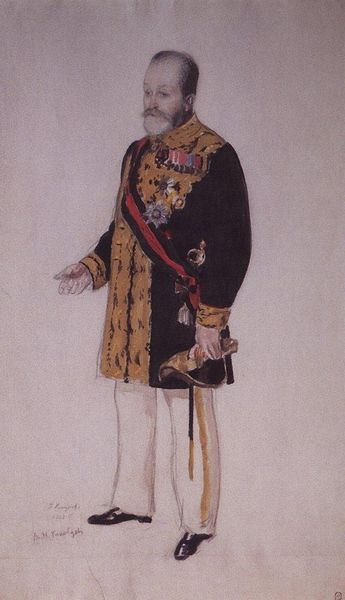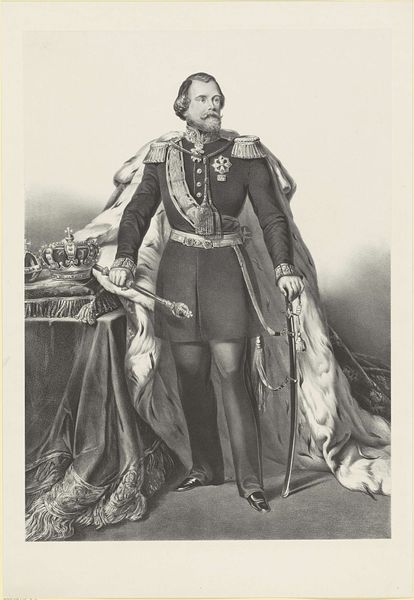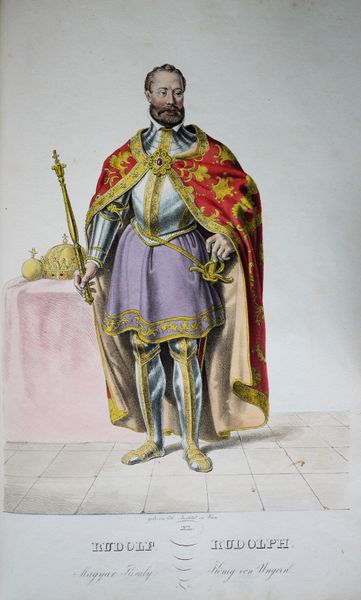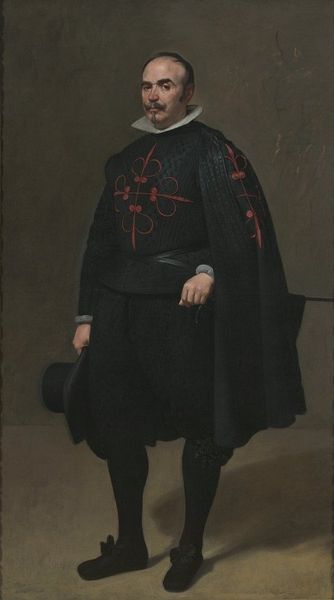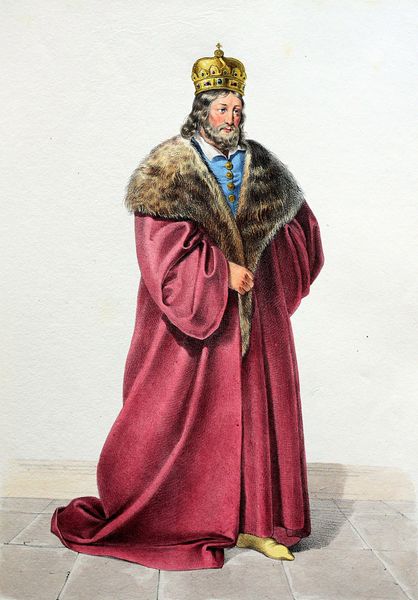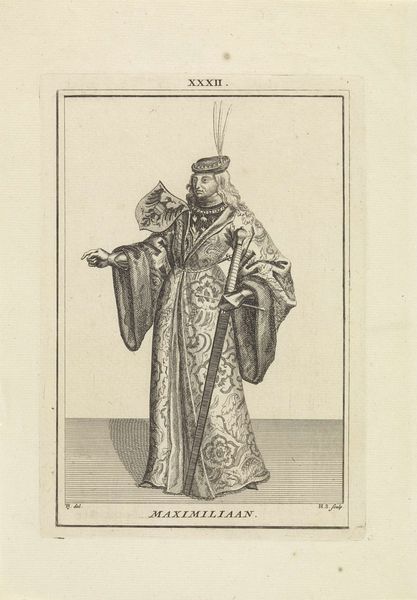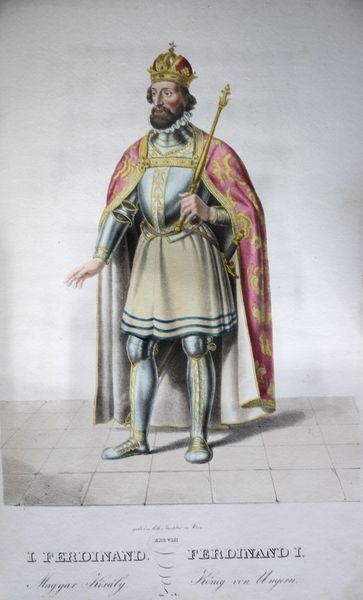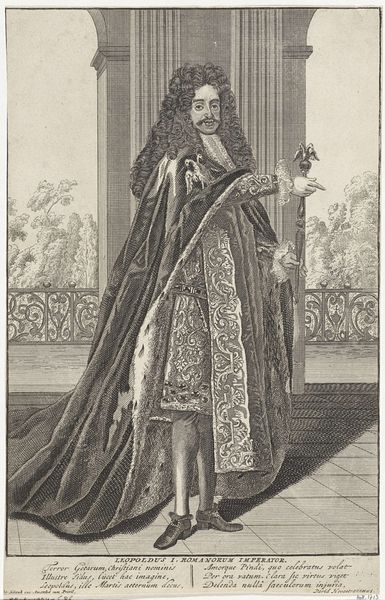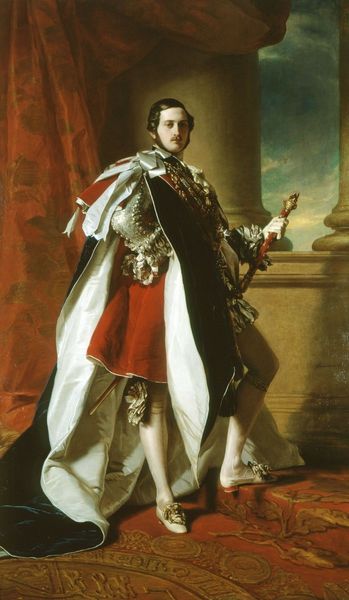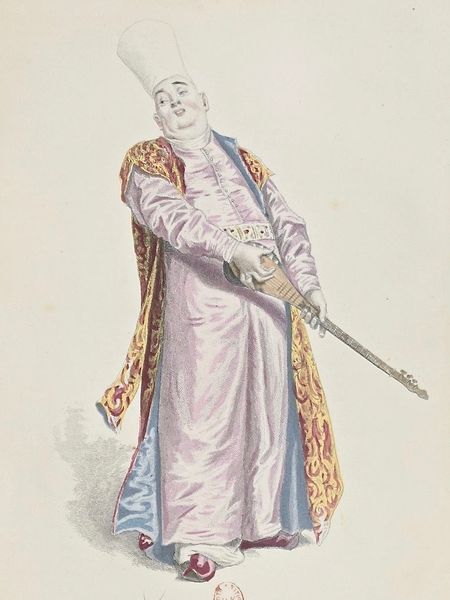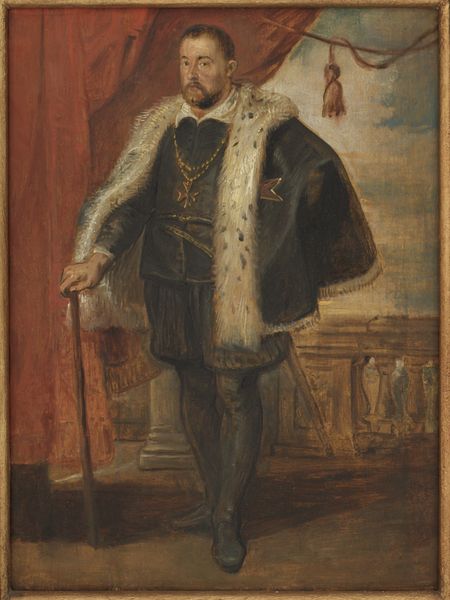
drawing, painting, print, paper, watercolor, engraving
#
portrait
#
drawing
#
painting
# print
#
charcoal drawing
#
paper
#
watercolor
#
coloured pencil
#
watercolour illustration
#
history-painting
#
academic-art
#
engraving
Dimensions: 350 × 215 mm
Copyright: Public Domain
Curator: Here we have a portrait of the Duke of Devonshire Carrying the Orb, currently held in The Art Institute of Chicago's collection. While the artwork's exact date is unknown, it's a compelling example of portraiture from that era, achieved with a blend of watercolor, charcoal drawing, and colored pencil. Editor: Immediately, what strikes me is the sheer… stiffness. Not in a bad way, but there’s a sense of the weight of tradition, literally. The layers of robes, the orb itself. It's as if the subject is pinned under the weight of expectations. Does that ring true? Curator: Absolutely. The formality is part of the point, isn’t it? It's a representation of power, deliberately composed. Portraits like these weren't about capturing a fleeting moment but cementing a legacy and social standing. The crimson robe, the bejeweled orb – each detail reinforces his aristocratic status. Editor: Right, and it speaks volumes about how portraiture functioned. It's not just about likeness. It's about communicating power through symbols. The way he's posed, the cool distance in his eyes, even the muted color palette, reinforces the desired message. He isn't offering you his soul, just his position. Curator: Precisely. And it begs the question of reception, too. How would the public have perceived this portrait? Was it an intimidating symbol of authority or a comforting reassurance of the social order? Or perhaps both at once. It’s intriguing to ponder the effect such portraits had in shaping public perception and maintaining established hierarchies. Editor: Definitely, thinking about how images are deliberately constructed to perform. What does it mean for power to be staged so meticulously? Also, it makes you wonder about the person beneath those layers and what's sacrificed for that image. Perhaps a melancholic acceptance? Curator: Perhaps. Ultimately, artworks like this portrait open a window into understanding how societies construct and maintain power structures, using visual cues that might appear rigid to us but carried significant social weight in their time. Editor: Yes, it all serves as a beautiful, if slightly suffocating, reminder that images, even the most apparently straightforward, are loaded with history and hidden agendas. Power rarely unveils its vulnerable self.
Comments
No comments
Be the first to comment and join the conversation on the ultimate creative platform.
